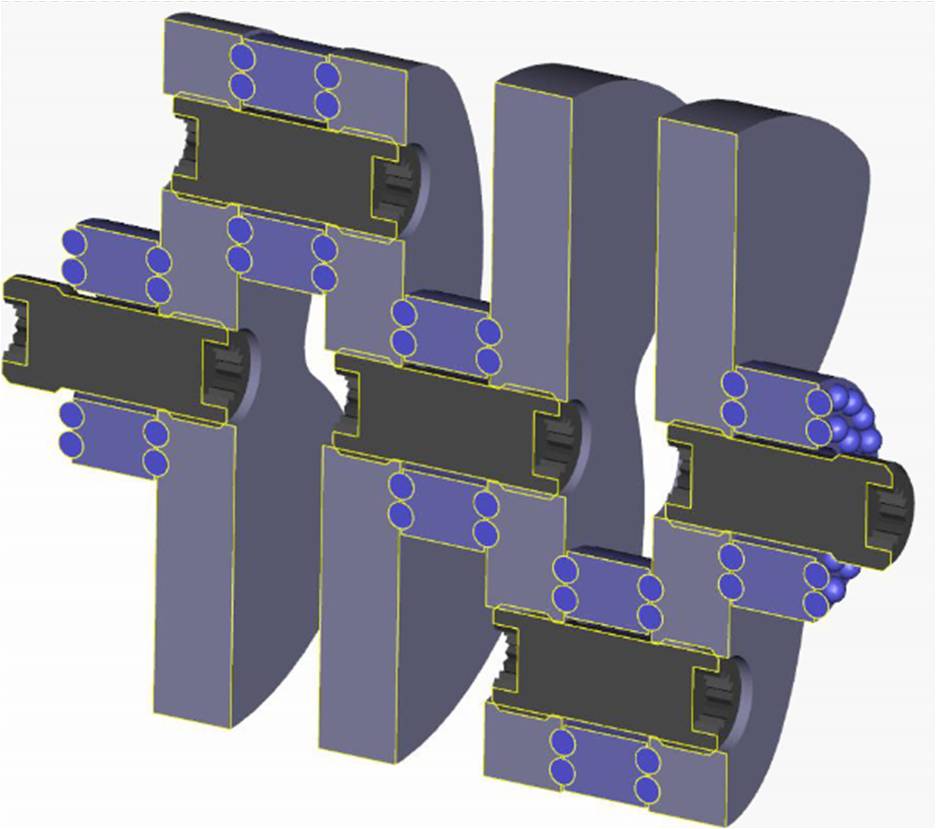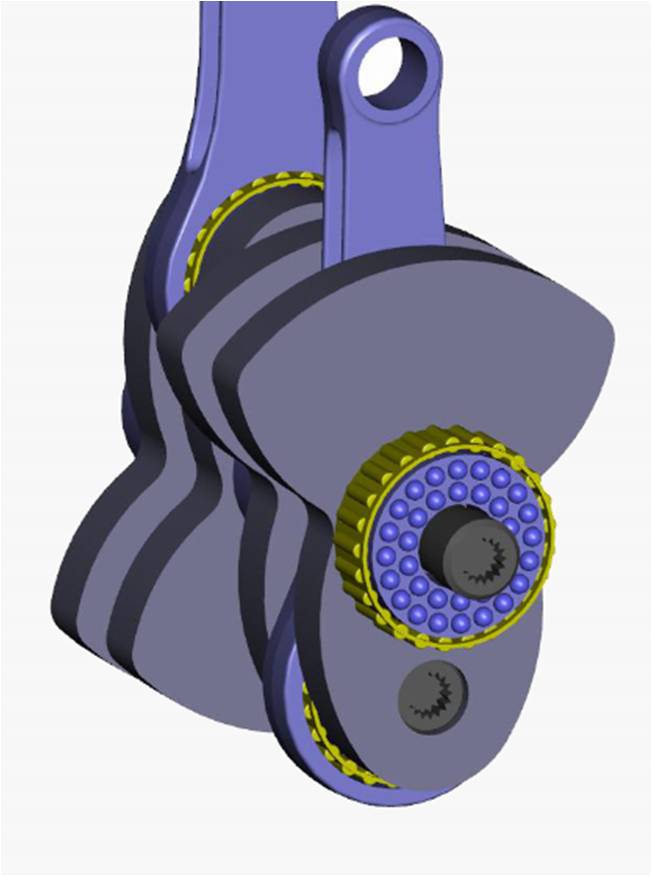The crank train causes big parts of the total engine friction, due to bearing friction and oil consumption. Both, the friction and the oil consumption can be greatly reduced by using roller bearings instead of plain bearings. The average fuel consumption can be reduced by more than 5% if roller bearings where used. It remains a demanding task to create a roller bearing crank train which is reliable, cost efficient and silent.
In the past, many high performance engines such as flight or racing engines have been equipped with roller bearing crank shafts. The use of an axial tooth on the parting sides allowed high loads while keeping the dimensions compact. The high cost of the axial tooth geometry, which had to be grinded into the hardened material, prevented its further use. Doğu Motor used this approach and modified this solution to a simplified variant which is suitable for serial production.  The axial tooth is replaced by a much simpler geometry for manufacturing. On the bearing journals as well as on the crank webs, spherical hollows will be mill-cut and filled with balls during the assembly. By doing so, the crank shaft can be build out of very simple elements and the machining process can be greatly simplified, even compared to plain bearing crank shafts. All parts can be machined before assembly and there will be no need for pressing fillets or eccentric grinding. Only the journal bearings have to be made out of expensive roller bearing steel, the rest of the crank shaft can be made of conventional materials.
The axial tooth is replaced by a much simpler geometry for manufacturing. On the bearing journals as well as on the crank webs, spherical hollows will be mill-cut and filled with balls during the assembly. By doing so, the crank shaft can be build out of very simple elements and the machining process can be greatly simplified, even compared to plain bearing crank shafts. All parts can be machined before assembly and there will be no need for pressing fillets or eccentric grinding. Only the journal bearings have to be made out of expensive roller bearing steel, the rest of the crank shaft can be made of conventional materials.
Since all critical areas of conventional single piece crank shafts are eliminated, the mechanical loads can be at least as high as on conventional crank shafts.
Parting the crank shaft enable the use of undivided con rods and excenters (in case of a VCR system) which reduces weight,  cost and friction and increases reliability. Keeping the bearing in a nearly perfect round shape is impossible when the bearing structure is divided, because screw force can?t be kept tight tolerances in serial production. Undivided con rods have a smaller violin which enables smaller and lighter crank cases. An additional possibility of decreasing the engine size and weight is decreasing the counter balance radius and increasing the counter weight length. This can be done, since there is no need for tooling after the assembly, so that the counter weights length is only limited by the con rod width. The crank shaft self-frequency will be higher than in conventional crank trains because of weight reduction and smaller counter weights with concentrated masses close to the rotation axis.
cost and friction and increases reliability. Keeping the bearing in a nearly perfect round shape is impossible when the bearing structure is divided, because screw force can?t be kept tight tolerances in serial production. Undivided con rods have a smaller violin which enables smaller and lighter crank cases. An additional possibility of decreasing the engine size and weight is decreasing the counter balance radius and increasing the counter weight length. This can be done, since there is no need for tooling after the assembly, so that the counter weights length is only limited by the con rod width. The crank shaft self-frequency will be higher than in conventional crank trains because of weight reduction and smaller counter weights with concentrated masses close to the rotation axis.
